
Journal of Popular Television
Scope & Guideline
Decoding the Power of Popular Television
Introduction
Aims and Scopes
- Cultural Representation in Television:
The journal emphasizes the examination of how different cultures, identities, and social issues are represented in television narratives. This includes the portrayal of race, gender, sexuality, and class, and how these representations influence public perception and societal norms. - Television as a Reflection of Society:
The journal investigates the ways in which television reflects and shapes societal values and issues, including political discourse, economic realities, and cultural shifts. This encompasses analyses of contemporary and historical television shows. - Intertextuality and Genre Studies:
A significant focus is placed on intertextual relationships within TV narratives, including the blending of genres and the influence of cinematic techniques. This allows for a deeper understanding of how television draws from and contributes to broader cultural dialogues. - Audience Reception and Engagement:
The journal explores audience interactions with television, including fan culture, viewing practices, and the impact of digital platforms on audience engagement. This research area considers how audiences interpret and respond to television content. - Television and Mental Health:
Recent publications highlight the exploration of mental health themes within television narratives, examining how shows address issues of mental illness and contribute to public discourse around well-being. - Corporate Influence and Ethics in Television:
The journal also delves into the ethical implications of corporate influence on television content, addressing themes of power, accountability, and the impact of corporate practices on storytelling.
Trending and Emerging
- Intersectionality in Representation:
There is an increasing focus on intersectionality, particularly how various forms of identity (such as race, gender, and sexuality) intersect within television narratives. This trend reflects a broader societal push for diverse and inclusive representations. - Mental Health and Well-being:
Recent studies emphasize the role of television in addressing mental health issues, exploring how shows depict mental illness and contribute to public understanding and stigma reduction. - Corporate Ethics and Accountability:
Emerging themes highlight the ethical considerations of corporate influence in television, analyzing how corporate practices shape narratives and viewer perceptions, especially concerning social justice issues. - Audience Agency and Interaction:
The journal is increasingly interested in how audiences engage with television content, including fan activism and the role of social media in shaping viewer experiences. This reflects the changing dynamics of television consumption in the digital age. - Streaming and Content Accessibility:
As streaming platforms dominate the television landscape, there is growing discourse on how this shift affects content accessibility, production practices, and audience engagement, indicating a need for ongoing analysis of these developments.
Declining or Waning
- Traditional Genre Studies:
There appears to be a waning interest in traditional genre studies, particularly those that do not address contemporary relevance or societal impact. As the journal shifts towards more intersectional and culturally relevant analyses, older genre conventions are less frequently discussed. - Historical Television Analysis:
While historical analyses of television remain important, the frequency of publications focusing solely on historical context without linking to current issues has decreased. This suggests a move towards more contemporary relevance in discussions. - Single-Country Focus:
Research centered exclusively on television from single countries is becoming less prominent. Instead, there is a growing trend towards comparative studies that examine global influences and transnational narratives.
Similar Journals

International Journal of Communication
Unveiling the complexities of communication in society.International Journal of Communication, published by USC Annenberg Press, is a premier open access journal dedicated to advancing the field of communication studies. Since its inception in 2007, the journal has provided a vital platform for researchers, professionals, and students to engage with cutting-edge research, theoretical frameworks, and empirical studies. With an impressive Q1 quartile ranking in Communication for 2023 and a notable Scopus rank of 156 out of 511 in the Social Sciences Communication category, the journal consistently contributes to high-quality scholarly discourse. It covers a wide array of topics, making it a crucial resource for those looking to stay informed about the latest developments in communication research. The journal's commitment to open access enhances its reach and impact, fostering a global community of academics and practitioners dedicated to exploring the complexities of communication in contemporary society. This makes the International Journal of Communication an essential read for anyone interested in understanding the dynamics of communication today.

Area Abierta
Advancing Knowledge in Social Sciences and EducationArea Abierta is a prominent scholarly journal dedicated to the exploration and dissemination of research in the fields of social sciences and education. Published by the Universidad Complutense de Madrid, this journal has embraced an Open Access model since 2001, allowing for unrestricted access to its diverse array of articles and enhancing the visibility of research findings globally. With a commitment to fostering academic discourse and innovation, Area Abierta serves as an essential resource for researchers, professionals, and students alike, providing a platform for critical insights and studies that contribute to ongoing advancements in its scope. The journal's alignment with rigorous academic standards and its role in the scholarly community underline its significance in promoting accessible knowledge and collaborative learning.
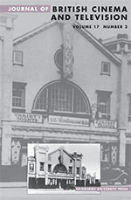
Journal of British Cinema and Television
Illuminating the Intersection of Visual Arts and SocietyJournal of British Cinema and Television, published by Edinburgh University Press, is a leading academic journal that explores the dynamic interplay between British cinema and television within the context of cultural studies. With an ISSN of 1743-4521 and E-ISSN of 1755-1714, this journal provides a platform for scholarly discourse, enabling researchers, professionals, and students to engage with critical analyses of screen media and its socio-political impact. As a Q3 journal in Communication and a Q1 journal in Visual Arts and Performing Arts for 2023, it occupies an influential position, particularly in the Arts and Humanities, where it ranks in the 90th percentile. The journal's scope encompasses a wide range of topics, from historical perspectives to contemporary practices in British visual culture, making it essential reading for anyone interested in the evolution and significance of screen studies in the UK. While it is not an open-access publication, the rigorous peer-review process ensures high academic standards and contributes to its esteemed reputation in the field. As it continues to converge from 2004 to 2024, the Journal of British Cinema and Television remains a vital resource for those seeking to deepen their understanding of British media and its global resonance.
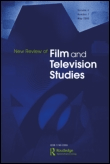
New Review of Film and Television Studies
Engaging Scholars in the Evolving Media LandscapeNew Review of Film and Television Studies, published by Routledge Journals, Taylor & Francis Ltd, stands as a vital platform for scholars and practitioners engaged in the dynamic fields of film and television studies within the United Kingdom. This journal, which has been in circulation since 2010 and will continue through 2024, provides a rigorous academic forum for contemporary research, critical analysis, and innovative discourse surrounding visual storytelling. With an impressive Scopus rank placing it in the 66th percentile for Visual Arts and Performing Arts, and a respectable Q2 categorization, the journal fosters an interdisciplinary approach, bridging communication and cultural studies. While the journal does not currently operate under an open access model, it remains an invaluable resource for researchers, students, and professionals aiming to understand and influence the evolving landscape of film and television in our digital age. As it navigates the intersection of media and society, New Review of Film and Television Studies is essential reading for those looking to advance their knowledge and contribute to the ongoing scholarly conversation.
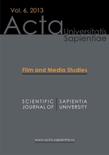
Acta Universitatis Sapientiae-Film and Media Studies
Exploring the Intersection of Film and Cultural DiscourseActa Universitatis Sapientiae-Film and Media Studies is a distinguished journal dedicated to the exploration of film and media within the broader context of cultural studies. Published by SCIENDO, this journal has been an essential resource for researchers, professionals, and students since it adopted an Open Access model in 2013, facilitating worldwide accessibility to cutting-edge scholarship. With its ISSN 2065-5924 and E-ISSN 2066-7779, Acta Universitatis Sapientiae aims to publish high-quality, peer-reviewed articles that promote innovative research and critical discourse in film and media studies. Located in Warsaw, Poland, and contributing to the international academic community, this journal provides a platform for interdisciplinary dialogue and the examination of emerging trends in media practices, theories, and technologies. By encouraging diverse perspectives, it not only enriches the academic landscape but also nurtures the next generation of scholars in this dynamic field.

Nauka Televideniya-The Art and Science of Television
Innovating Research at the Confluence of Media and CultureNauka Televideniya - The Art and Science of Television is an esteemed academic journal dedicated to the interdisciplinary exploration of television as a medium and its impact on culture, society, and technology. Published by the GUMANITARNII INST TELEVIDENIYA & RADIOVESCHANIYA IMENI M A LITOVCHINA-GITR, this journal has been committed to open access since 2010, ensuring that valuable research is freely available to a global audience. With an ISSN of 1994-9529 and an E-ISSN of 2587-9782, "Nauka Televideniya" serves as a vital platform for scholars, researchers, and students to share innovative findings, theoretical advancements, and practical applications relevant to the television industry. Articles published cover a wide array of topics, including media studies, communication theory, and technological advancements shaping the future of television. The journal's mission is to foster discourse that enhances understanding of the television medium's role in shaping human experience; a critical endeavor in an age where audiovisual media permeates daily life.
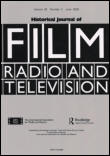
HISTORICAL JOURNAL OF FILM RADIO AND TELEVISION
Exploring the Evolution of Visual Media NarrativesHISTORICAL JOURNAL OF FILM RADIO AND TELEVISION, published by Routledge Journals, Taylor & Francis Ltd, is a leading academic publication that explores the intricate narratives of film, radio, and television throughout history. With an ISSN of 0143-9685 and an E-ISSN of 1465-3451, this journal has established itself as a vital resource for researchers and professionals within the fields of communication, history, and the visual arts, reflecting its commitment to rigorous scholarship since its inception in 1981. The journal occupies a reputable position in the academic landscape, recently categorized as Q4 in Communication and History, and Q3 in Visual Arts and Performing Arts, indicating its relevance in these fields. Despite the absence of Open Access options, the publication remains accessible to institutions and individuals eager to engage with critical analyses and historical perspectives on visual media. With its broad scope and historical emphasis, the HISTORICAL JOURNAL OF FILM RADIO AND TELEVISION is crucial for understanding the evolution of media and its impact on culture, making it an essential read for scholars and practitioners alike.

Critical Studies in Television
Connecting Communication and Culture Through TelevisionCritical Studies in Television is a leading academic journal published by SAGE Publications Ltd, dedicated to exploring the intricate dimensions of television within the fields of Communication and Cultural Studies. Since its inception, this journal has become an essential resource for researchers, professionals, and students alike, particularly as it navigates the evolving landscape of television studies from 2014 to 2024. With an impressive impact factor, the journal achieved notable rankings in 2023: it is positioned in the Q2 quartile for Communications and the Q1 quartile for Cultural Studies. Recognized by Scopus with a rank of #160 in Cultural Studies and #193 in Communication, it reflects its growing influence and relevance in these academic arenas. While currently not available through an Open Access model, readers are encouraged to engage with its diverse and critical contributions that foster a deep understanding of television’s role in contemporary culture.

Media International Australia
Catalyzing Conversations on Cultural NarrativesMedia International Australia is a leading journal that occupies a unique position at the intersection of communication and cultural studies. Published by SAGE Publications Ltd, this journal has established itself as a vital platform for scholarly discourse since its inception, now converging efforts from 2008 to 2024. With an impressive Q1 ranking in both the Communication and Cultural Studies categories, it ranks 12th out of 1304 in Cultural Studies and 42nd out of 511 in Communication, placing it within the 99th and 91st percentiles respectively according to Scopus metrics. The journal is committed to providing access to rigorous research that reflects contemporary issues in media, making it essential reading for researchers, professionals, and students keen on advancing their understanding of media's role in society. Despite not being fully Open Access, it ensures that quality research remains accessible through institutional subscriptions, allowing a broad audience to benefit from its insightful contributions.
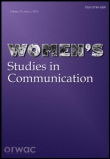
Womens Studies in Communication
Advancing Women's Voices in Scholarly DiscourseWomens Studies in Communication, published by Routledge Journals, Taylor & Francis Ltd, stands as a pivotal platform for scholars and practitioners in the fields of communication and gender studies. With an impressive history of publishing since 1977, this journal delves into the intricate intersections of gender and communication, fostering critical dialogue and innovative research. It currently holds a category quartile ranking of Q2 in both Communication and Gender Studies, reflecting its significant impact in these vital fields. With an ongoing commitment to exploring the nuances of women's voices and experiences in various communicative contexts, the journal provides an invaluable resource for understanding contemporary societal issues. While currently not available as an open-access publication, its adherence to high academic standards, evidenced by its Scopus rankings, making it an essential read for researchers, students, and professionals eager to enrich their understanding of gender dynamics in communication.